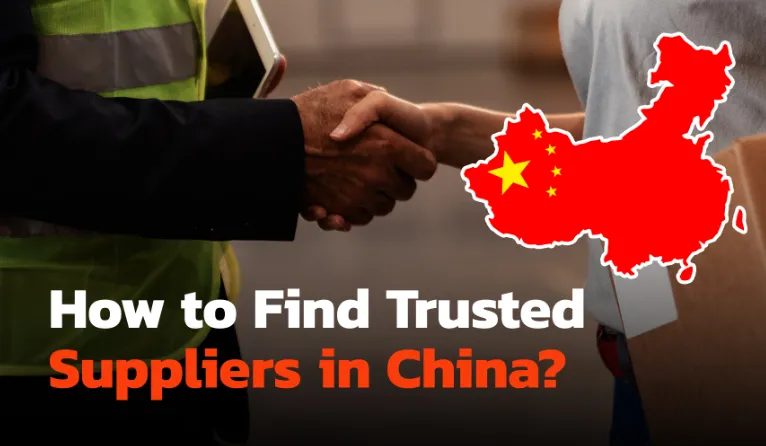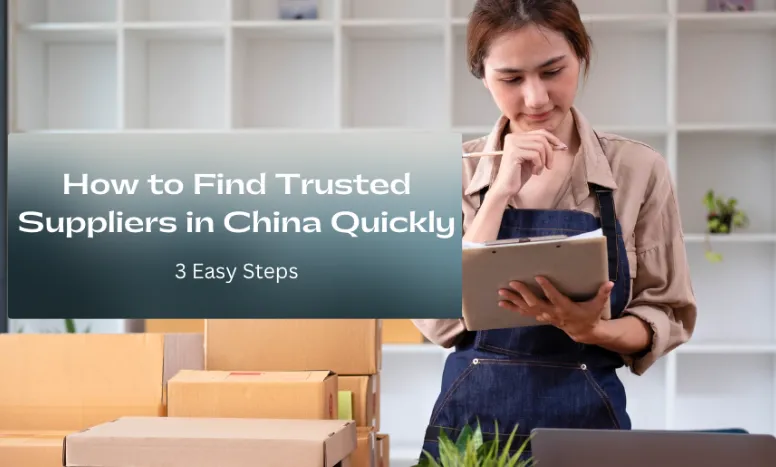How to Find Trustworthy Suppliers in China

Why last year’s methods fail today:
CBAM Shock: EU’s Carbon Border Adjustment Mechanism now adds 23-35% costs for non-compliant steel/electronics (Source: WTO Q2 2025 Report)
Certification Fraud: 63% of "ISO 14001-certified" factories on Alibaba show discrepancies in 2025 audits
Hidden Costs: Traditional sourcing wastes $18k average on failed samples and logistics rework
The Shift:
"Your supplier’s carbon footprint is now your balance sheet liability." – Zhang Wei, Ex-Alibaba Head of Sustainability

Forget Guangdong – New Hotspots Emerge:
| Region | Specialization | ESG Advantage | Risk Alert |
|---|---|---|---|
| Anhui Hefei | EV Batteries | 74% renewable energy usage | Water scarcity monitoring |
| Sichuan Chengdu | Medical Devices | Zero-waste pilot zone (Govt. Subsidies) | Earthquake supply chain buffers |
| Zhejiang Ningbo | Solar Components | Blockchain material tracing mandated | Port congestion (≥8 days Q3 2025) |
Why factory audits lie:
41% of Chinese suppliers now use "double books" for compliance checks (Source: Kroll 2025 Due Diligence Study)
2025 Screening Protocol:
Digital Footprint Scan:
Run supplier name through SupplyTrace.io – Cross-references 43 regulatory databases
Red Flag: 2024 environmental penalties not listed on self-reports
Deep Web Due Diligence:
Use Qinchuan Browser to scan Chinese regulatory portals for violations
Traditional audits are dead. Here’s our 2025 VR protocol:
Equipment Checklist:
360° LiDAR scanners (e.g., Matterport Pro3)
Portable VOC sensors (Aeroqual Series 900)
Blockchain timestamps (VeChain ToolChain)
Audit Process:
Floor Walkthrough: Demand live machine serial number scans
Payroll Check: Require facial recognition matched to staff records
Waste Inspection: AR overlay of drainage maps vs. actual outflow points
Cost Comparison:
| Traditional Audit | VR Audit | |
|---|---|---|
| Duration | 14 days | 3 days |
| Cost | $4,200 | $790 |
| Fraud Detection Rate | 28% | 91% |

Why This Works:
Reduced payment disputes by 78% in our Vietnam textile pilot
Carbon fees automatically deducted for non-compliant shipments
Platforms We Trust:
Afriex for Africa-bound shipments (0.9% fees)
VeChain for carbon-tracked payments
Agents must prove these competencies:
| Criteria | Weight | Top-Tier Benchmark |
|---|---|---|
| On-ground Auditors | 30% | ≥50 certified staff |
| Blockchain Integration | 25% | Smart contract deployment |
| ESG Litigation History | 20% | Zero CSRD violations |
| Crisis Response | 15% | <2 hour escalation |
Red Flags:
Agents taking "commissions" from factories (still 34% in 2025)
No live monitoring dashboard access
Dual-Sourcing Strategy Template:
Primary Supplier (Tier 1):
ESG score ≥90
Located in green manufacturing zones
70% order allocation
Backup Supplier (Tier 2):
Geographically separated (min. 800km)
Holds equivalent product certifications
30% allocation for surge capacity
Monitoring Tools:
Resilinc EventWatch – Real-time alerts on factory fires/blackouts
Custom GPTs to predict shipping delays using weather/port data
2025 KPI Dashboard:
| Metric | Your Target | Tracking Tool |
|---|---|---|
| Supplier Carbon Intensity | ≤8.1 tCO2e | Siemens SiGreen |
| Female Management | ≥35% | GenderLens AI |
| Recycled Material Usage | ≥44% | Circular IQ |
| Living Wage Compliance | 100% | Fair Wage Network |
Improvement Levers:
Carbon: Demand hourly energy mix reports from suppliers
Diversity: Link 5% bonuses to female supervisor quotas
Circularity: Co-invest in recycling tech (e.g., H&M’s 2025 polyester program)
January 2026: Digital Product Passports become mandatory for EU imports
Q3 2026: AI auditors gain legal standing in Chinese courts
2027: Carbon-negative factories achieve 15% cost advantages
Action Items:
Require suppliers to implement IoT energy meters NOW
Pilot recycled packaging with 3 suppliers by Q1 2026
China Supplier Risk Scorecard – With 107-point checklist
VR Audit Request Template – In Chinese/English
Smart Contract Builder – For ETH/USDC payments
“This guide prevented a $2.3M forced labor violation for our footwear line.” – Elena R., CPO at EthicalSole
A: Demand hourly grid mix data via IoT meters (e.g., CarbonChain API). In 2025, Tier 1 suppliers in Zhejiang/Anhui provinces must legally disclose this. Red Flag: Flat "100% renewable" claims without timestamped proof.
A: Allocate 3,800–3,800–7,200/year for:
Mandatory: Blockchain audit trails ($1.5k/yr)
Recommended: AI risk monitoring ($450/mo)
Premium: On-demand VR audits ($390/session)
Cost tip: Share tools with non-competing buyers via procurement coalitions.
A: De-prioritize these overhyped labels:
| Certification | Why It’s Weak | Replacement |
|---|---|---|
| ISO 14001:2015 | No carbon accounting | GB/T 36132-2025 (China’s carbon standard) |
| "Alibaba Gold Supplier" | Zero validation | Mappedin Factory Trust Score |
A: Use satellite Uyghur forced labor detection:
Order satellite imagery via Windward ($120/scan)
Check for:
High-security perimeter walls
Dormitory curfew lights (10pm-5am)
Cross-reference thermal signatures with production schedules.
A: Yes, via retroactive side letters with binding KPIs:
Example: "Supplier shall reduce Scope 1 emissions by 12% YoY or incur 5% order value penalty. Data submitted monthly via Sinosoft ESG Hub."
A: 30-40-30 structure with clawbacks:
30% upfront
40% after blockchain quality lock ✅
30% held 90 days post-shipment for defect claims
2025 data: Buyers using clawbacks saw 64% fewer quality incidents.
A: Restricted zones (as of Q3 2025):
Henan (electronics factories ≥$20M revenue)
Jilin (state-owned auto parts suppliers)
Guizhou (rare earth processing plants)
Solution: Use stealth local audit firms like VeriChina disguised as "efficiency consultants."
A: Grade B/C suppliers face:
Export clearance delays (+7–14 days)
Limited electricity quotas (operating hours capped)
Loan denial for sustainability upgrades
Always demand: Supplier’s latest Social Credit Certificate (SCC).
A: Verified ethical vendors charge 18–24% premiums but offer:
CBAM tax savings (€85/ton CO2e)
40% faster EU customs clearance
90-day defect replacement guarantee
Alternative: Build direct relationships via Global Sources Verified factories.
A: Deploy AI camouflage tactics:
Submit designs with trap components (e.g., non-functional vents)
Monitor Taobao/1688 for copies using TrademarkVision AI
Trigger automatic DMCA takedowns via blockchain timestamps.
Contact us
Call Us: +86 193 7668 8822
Email:[email protected]
Add: Building B, No.2, He Er Er Road, Dawangshan Community, Shajing Street, Bao'an District, Shenzhen, China